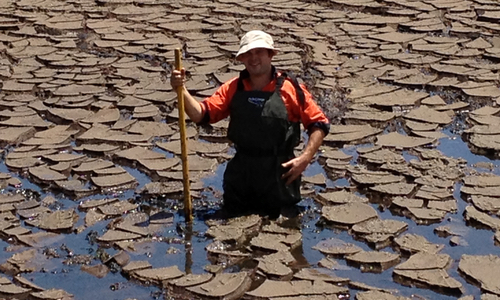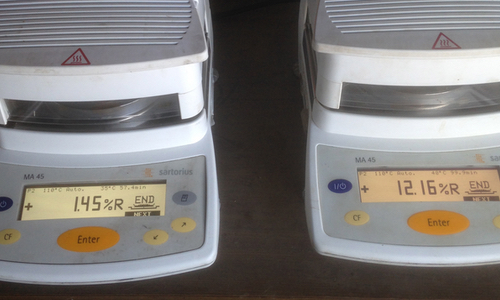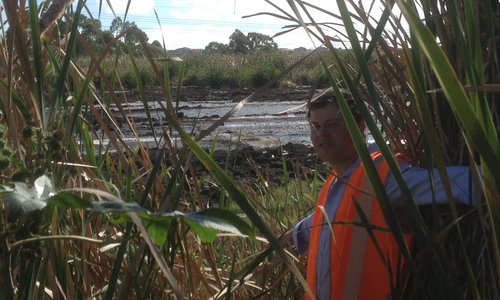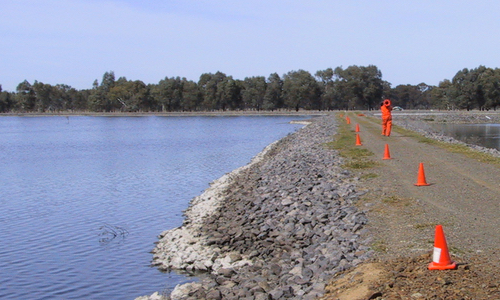Services Sludge Survey
Sludge Survey
A detailed sludge survey provides the basis for the scope of works and related costings for any bio solids management project.
Bergmeier Environmental measures the depth of sludge via several methods. This confirms that the measurements are accurate and reliable. One method involves lowering a calibrated perspex tube through the clear water column and into the sludge. A valve is closed on the top of the tube and the clear water column is removed from the lagoon. The depth of clear water is then clearly visible in the calibrated Perspex tube. The depth of sludge is then calculated by subtracting the depth of clear water from the total depth of the lagoon. The depth of clear water is also determined by the use of a Partech infrared sludge level detector. The infrared sensor is lowered down through the clear water column until it encounters the sludge layer. An audible alarm sounds and the depth of clear water is measured directly from the length of the sensor cable. Both systems produce an excellent result and can be used to verify that operators are using the correct technique to get the right result. The Partech sludge detector can be used to cover a larger area in a shorter time frame whereas the calibrated Perspex tube is also used to extract core samples of the sludge accumulation from the bottom.
It is important to note that the actual sludge volume within any lagoon will vary on a seasonal basis depending on a number of factors such as the rate of biological activity and lagoon loadings at the time of survey. The average total solids in the core samples will also vary accordingly.
The sludge survey utilises the volume of the sludge at the time of the survey with the average solids concentration at the time of the survey to determine the total Tonnes of Dry Solids. (TDS) The volume of sludge multiplied by the average solids concentration will provide the best estimate of the Tonnes of Dry Solids within the lagoon. This is the only number that will be relatively constant and not subject to seasonal variation and lagoon loading. Tonnes of Dry Solids is the most consistent reference to use when costing sludge removal and disposal operations.
Bergmeier Environmental’s methodology includes a large number of survey points to increase the survey accuracy. As the number of measurements taken increases, it becomes less important to exactly pinpoint the survey location within the lagoon. Survey methods involving the positioning a boat over a known exact location in a lagoon with only a small number of samples taken generally produces less accurate results. The sludge survey should also work on the basis of collecting as many sample points as possible within the lagoon in order to clearly define any irregularities in the floor and clearly define the profile of the sludge mass.
Details Include
- Actual sludge volume
- Biological activity
- Total Tonnes of Dry Solids (TDS)
- Seasonal variation and lagoon loading



